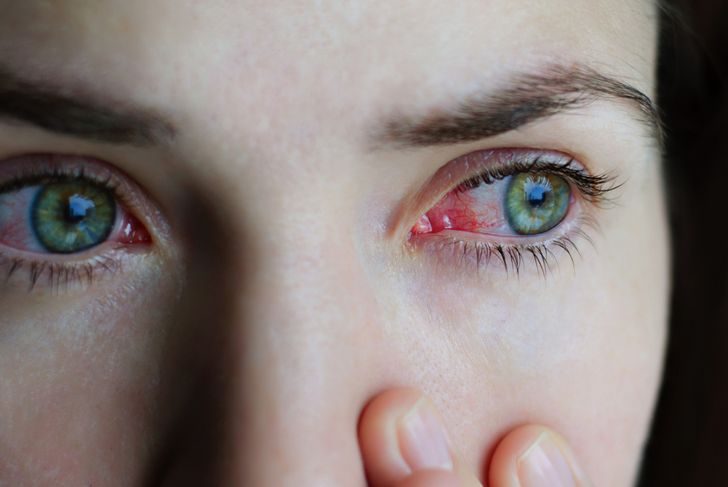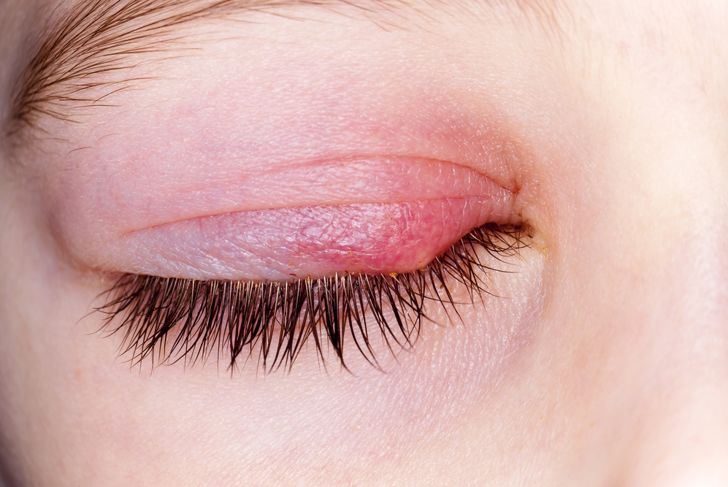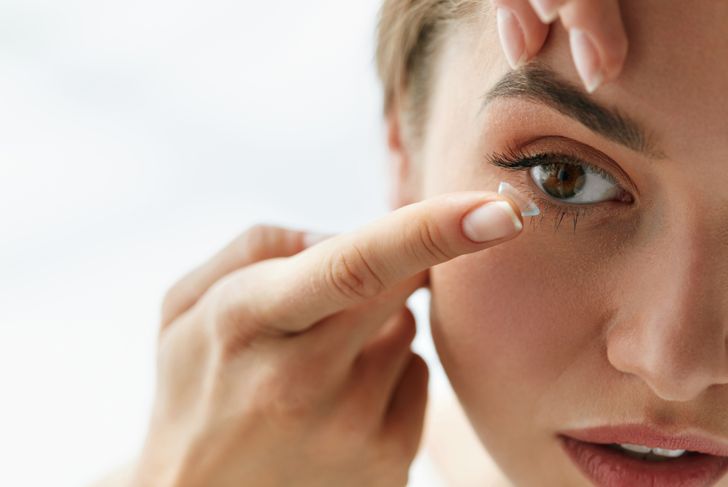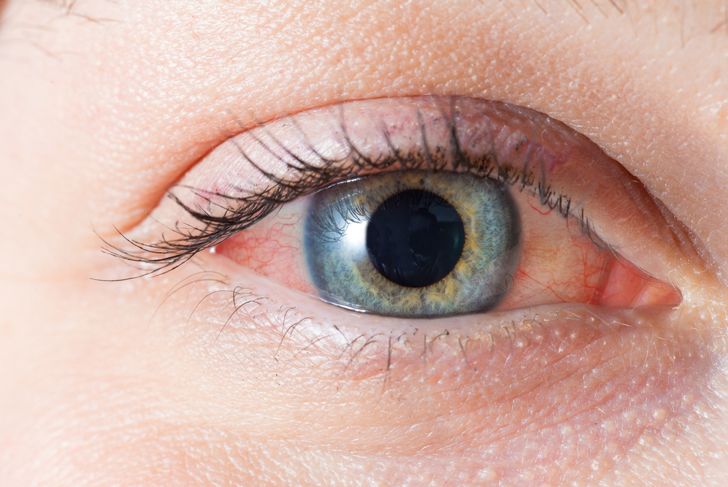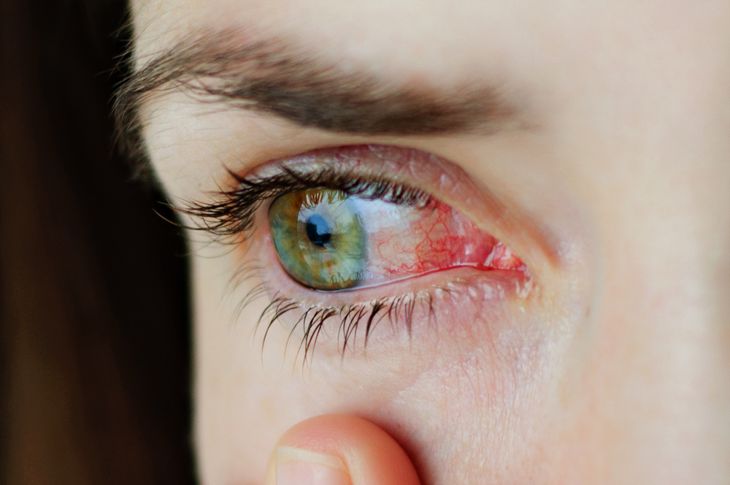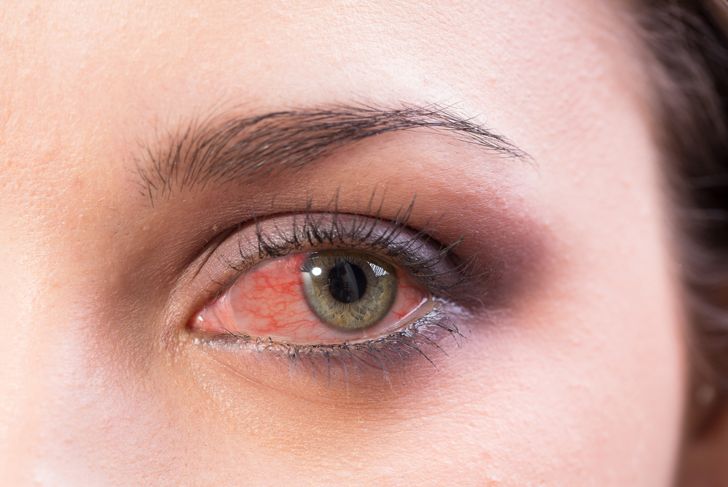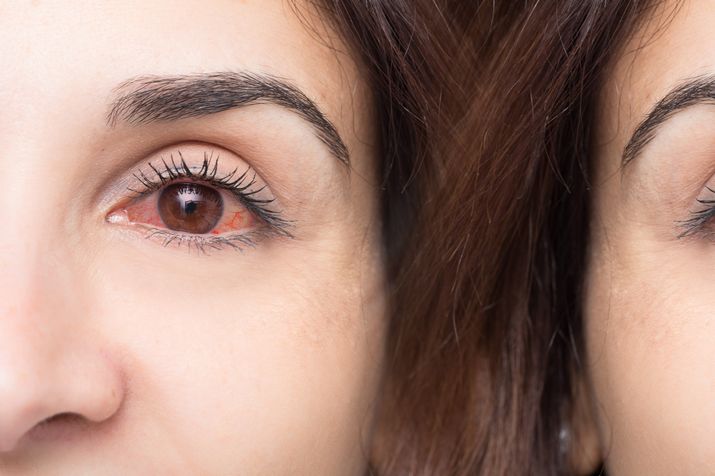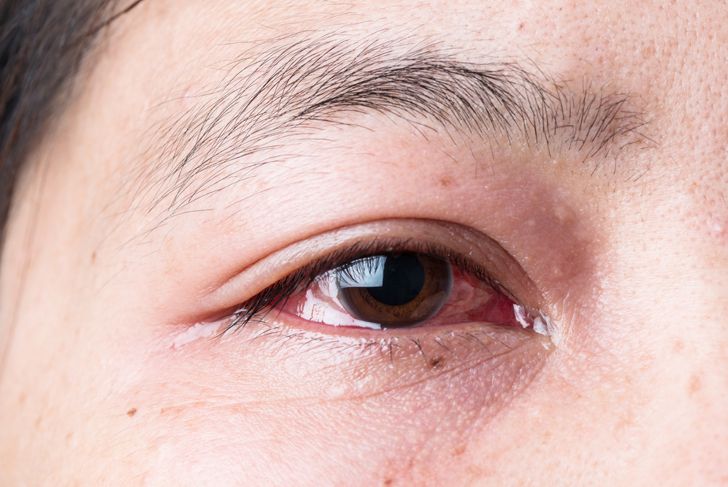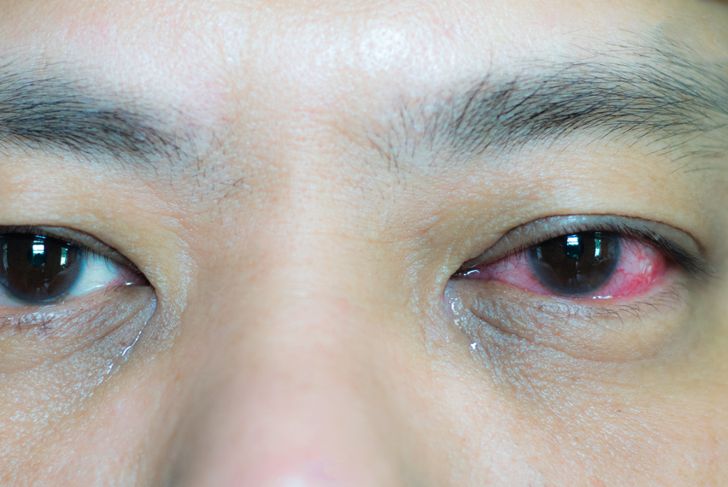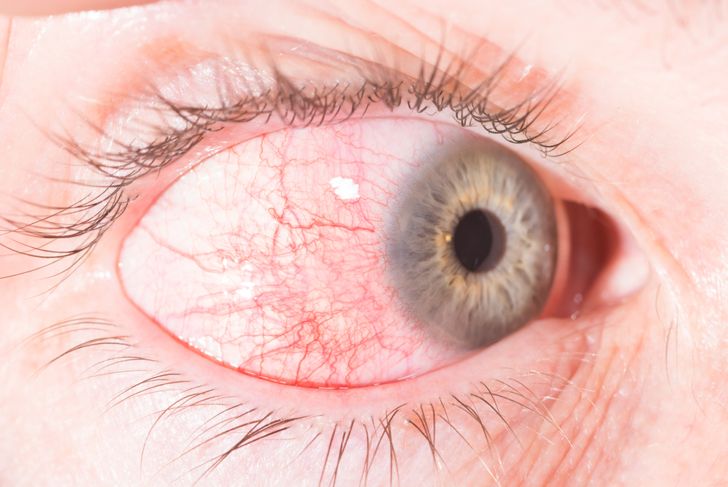Red eyes occur when the tiny blood vessels in the eye expand, and this could be triggered for many reasons. Most often, red eyes do not indicate a serious medical emergency, rather an infection like pink eye, or eye fatigue caused by looking at a screen for too long. Sometimes red eyes are accompanied by itching, burning, grittiness, tearing, or discharge. If you have red eyes, and experience discharge, blurry vision, loss of vision, or if the redness persists for an extended period, make an appointment with an ophthalmologist as soon as possible. These are some of the most common reasons why you may be experiencing redness in your eyes.
Bacterial or Viral Conjunctivitis
Conjunctivitis is commonly known as “pink eye” because it makes your eyes look pink. It can be caused by bacteria, virus, or allergens. Both bacterial and viral conjunctivitis are very common and very contagious. According to the Center for Disease Control and Prevention (CDC), bacterial conjunctivitis is the leading cause of children being absent from daycare or school. Viral conjunctivitis is usually mild and will clear up by itself within a matter of days. Bacterial conjunctivitis, however, often needs to be treated with antibiotic eyedrops or ointments, although in mild cases it may resolve within a few days.
Dry Eyes
Dry eye syndrome is when the quality or quantity of tears is unable to keep the eye lubricated. According to the National Eye Institute (NEI), millions of adults in the United States experience dry eyes. Symptoms of dry eyes include grittiness, a feeling that there is something in the eye, redness, stinging, burning, discharge, and pain. Some people may even experience blurred vision. Dry eyes may be experienced for unknown reasons, but some causes may include certain medications like antihistamines and decongestants; older age; rosacea; autoimmune disorders; hormone changes (more common among women); windy, smoky, or dry environment; seasonal allergies; too much screen time; or laser eye surgery. Dry eye syndrome cannot be cured, but it can be managed—talk to your doctor if you think you may have dry eyes.
Stye
A stye is a painful growth near the eyelid, and it can form on the inner or the outer part of the eyelid. The sty usually causes irritation and pain in the eye and can lead to redness of the eye. According to the Mayo Clinic, styes are usually caused by an infection of oil glands in the eyelid, from the bacterium Staphylococcus. People who are not careful to wash their hands before touching their eyes, people who leave makeup on overnight, and those who use expired or unhygienic makeup products are at greater risk for developing a stye. In most cases, the stye resolves on its own within a few days. If the eye becomes inflamed or if the symptoms do not subside, make an appointment with your general practitioner, who may refer you to an ophthalmologist for treatment.
Allergies
Seasonal or perennial allergies are one of the leading causes of red eye—also called allergic conjunctivitis. Pollen is a common allergen that can cause redness, itching, burning, tearing, and swelling of the eyes. Allergies happen when your body overreacts to something, causing your immune system to release histamine. This is the reason that antihistamines may help if allergies cause your red eyes.
Contact Lenses
Another common reason for red eyes is over-wearing or not taking proper care of your contact lenses. The eyes are very sensitive, so when the contact lens accumulates buildup or bacteria, the eyes immediately respond by becoming red and irritated. Contact lenses can also lead to dry eye syndrome because they limit the amount of oxygen that reaches the eye. One way to reduce irritation is to keep your contact lenses clean and change them often. Contact lens wearers should also own a good pair of glasses, and wear them a few times a week instead of contact lenses. Daily disposable lenses could also be a solution for some people, as they tend to be thinner, and cleaner than reusable contact lenses.
Eye fatigue
Eye fatigue, or eye strain, is becoming more common in our day and age with the ever-growing number of hours spent in front of screens. So many people use computers at work, and eye strain occurs in 50-90% of those who work in front of a computer. There are certain things you can do to ease the strain on your eyes. Firstly, follow the 20-20-20 rule—every 20 minutes, take a 20-second break and focus on something 20 feet away. Sit in an area with good lighting, and don’t sit too close to the computer screen. Use an LCD screen, and adjust the brightness on your computer so that it matches the brightness of your surroundings.
Foreign object in the eye
Another cause of eye redness could be a foreign object in the eye, such as an eyelash, sand, dust, or anything else that does not belong in the eye. If you do have a small foreign object in your eye, don’t stick your fingers in there to get it out—this will only cause more irritation. Instead, wash your eye out with an eye wash solution or with tap water. If this doesn’t work, you may attempt to remove the object manually with a cotton swab. Be sure to look in the opposite direction to protect the cornea. For larger foreign objects, seek immediate medical attention.
Subconjunctival hemorrhage
A subconjunctival hemorrhage is when there is a broken blood vessel in the eye which causes bleeding under the conjunctiva. The conjunctiva is a clear mucous membrane which covers the eye and lines the eyelid. A subconjunctival hemorrhage may look scary, but it may go unnoticed by the person until someone else points it out, or until they look in the mirror. According to the Mayo Clinic, this type of hemorrhage can occur without any harm to the eye, and it can be caused by something as minor as a sneeze. It usually does not need to be treated, and in most cases, the redness goes away within two weeks.
Corneal abrasion
A corneal abrasion is when the surface of the eye gets scratched. It’s one of the most common eye injuries, and most people recover without any permanent eye damage. Anything that makes contact with the eye’s surface can cause a corneal abrasion. A scratched eye can cause tremendous discomfort, light sensitivity and can affect vision—and of course, cause redness. Corneal abrasions can be treated with lubricating eye drops, and antibiotic eye drops to prevent infection. Superficial corneal abrasions usually heal within three days. See an ophthalmologist if you think you may have a scratched eye.
Corneal Ulcer
A corneal ulcer is an open sore in the cornea of the eye usually due to a bacterial infection. It can be caused by a number of things including chemical or physical trauma, contact lens misuse, or anything else that may scratch or compromise the cornea, allowing bacteria to enter. Symptoms include eye redness, mild to severe discharge, a feeling of a foreign object in the eye, and pain. Most of the time, corneal ulcers are preventable with proper care and treatment of the eye, especially after corneal abrasion. Corneal ulcers can be serious, even leading to loss of vision or blindness. With proper and timely treatment, the ulcer can improve, reducing the risk of permanent damage.
Glaucoma
Glaucoma is a condition in which there is too much pressure in the eye, affecting the optic nerve. Long-term, this condition can result in vision loss or blindness. It is the leading cause of blindness in the United States. Acute glaucoma is when the eye suddenly becomes red, and the cornea swells, leading to blurred vision. A person may see halos as well. This is considered a medical emergency, as it can permanently destroy vision if left untreated.
Uveitis
Uveitis is inflammation of the uvea—the middle layer of the eye between the retina and the sclera and cornea. According to the National Eye Institute, uveitis can be caused by another problem in the eye, such as disease or trauma, or it can be caused by an inflammatory disease which affects other parts of the body as well. Symptoms for uveitis include redness, decreased vision, pain, light sensitivity, and increased floaters. Treatment will vary depending on the type of uveitis a patient has—but it is targeted to decrease inflammation—and may include corticosteroid eye drops and injections, immunosuppressive drugs taken orally, and anti-inflammatory medication in the form of eye drops injections, pills, or to be given intravenously.
Scleritis
Scleritis is inflammation of the sclera—or the white part of the eye. Usually, scleritis is associated with an underlying autoimmune disorder, like rheumatoid arthritis but can also be caused by trauma to the eye, and rarely by a fungus or parasite. Symptoms of scleritis include redness, blurred vision, tearing, sensitivity to light, severe pain, and tenderness of the eye. Sometimes, the pain can extend to the jaw, face, or head on the side of the affected eye. Left untreated, scleritis can result in loss of vision or blindness. Treatment will vary based on the severity of the condition but may include corticosteroid pills and anti-inflammatory drugs as well as eye drops and antibiotics.

 Home
Home Health
Health Diet & Nutrition
Diet & Nutrition Living Well
Living Well More
More